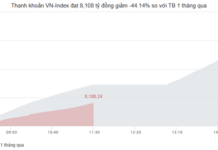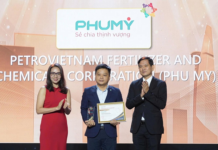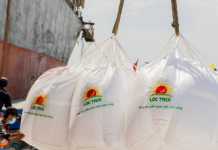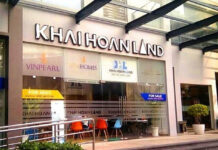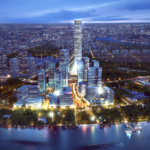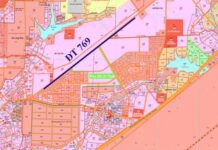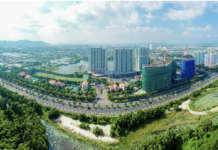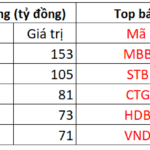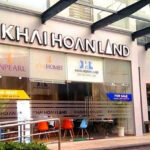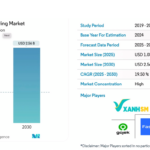Synchronizing Transportation Development and Real Estate in Ho Chi Minh City
In its urban development plan centered around public transportation (TOD), Ho Chi Minh City has outlined three implementation phases.
Phase 1 spans the first 5 years starting from 2025; Phase 2 covers the subsequent 10-15 years, and Phase 3 extends from 15 to 20 years thereafter, aligning with the completion of the urban rail network.
According to Mr. Vo Tuan Thanh from the Ho Chi Minh City Urban Development Management Board, the city aims to establish an urban rail network and regional connectivity as the backbone of transportation, fostering urban restructuring under the TOD model. TOD implementation will prioritize invested metro lines with high demand, regional connectivity, and areas with expiring public or leased land.
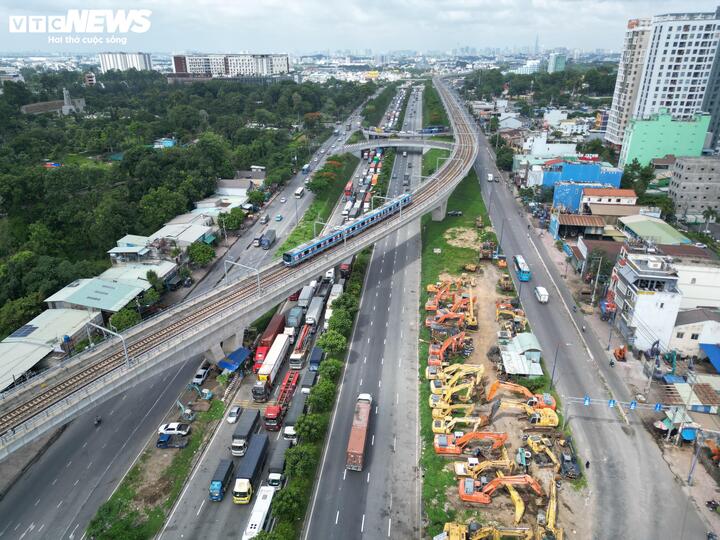
The three phases of urban development around metro stations in Ho Chi Minh City will align with the completion of the city’s urban rail system. (Illustrative image)
Specifically, Ho Chi Minh City aims to develop TOD in areas with high land value recovery potential to reinvest in metro infrastructure. Projects will be implemented in phases, ensuring synchronization between transportation development and real estate, generating cash flow, and market appeal.
From 2025 to 2030, the focus will be on Metro Line 1 (Ben Thanh – Suoi Tien), Metro Line 2 (under preparation for construction), and the extended Metro Line 2 (Ben Thanh – Thu Thiem – Long Thanh), along with Ring Road 3.
This phase will serve as a learning period for the city, expanding TOD to former Binh Duong areas and connecting with Long Thanh Airport.
Between 2030 and 2045, TODs will develop along Metro Lines 3, 4, and 6, aiming to complete the metro network and facilitate intra-city circulation. Development will also occur around the extended Metro Line 2 to former Binh Duong and the metro line connecting former Vung Tau to Long Thanh, creating a network linking Ho Chi Minh City with neighboring provinces.
Post-2045, the city will complete Metro Lines 5, 7, 8, 9, and 10, aiming for a fully integrated urban rail network. TODs around these areas will be developed concurrently.
“In the initial 5 years, Ho Chi Minh City will focus on researching and developing TOD along three key routes: Metro Line 1, Metro Line 2, and Ring Road 3, with 11 priority locations such as the C30 area, around Phuoc Long Station, Coconut Farm, the 29-hectare area in Long Binh Ward, Tan Hiep Area 8, and around Tan Kien Station… Subsequently, additional areas like the Tham Luong Depot (Metro Line 2) will be included, gradually forming an urban ecosystem integrated with modern public transportation,” said Mr. Thanh.
Mandating Affordable Housing Development in TODs
Currently, Ho Chi Minh City lacks completed TOD projects for practical experience. However, according to the Urban Development Management Board, the city has established policy frameworks and is piloting initial steps.
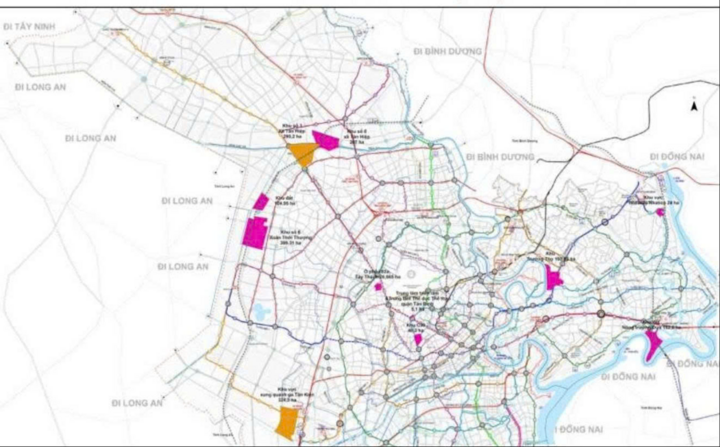
From 2025 to 2030, TOD development will focus on the Ben Thanh-Suoi Tien line, Metro Line 2, and the extended Metro Line 2 (Ben Thanh – Thu Thiem – Long Thanh), along with Ring Road 3. (Source: Urban Development Management Board)
Metro Line 1 (Ben Thanh – Suoi Tien), already operational, serves as a crucial foundation for future TOD implementation.
Ho Chi Minh City has selected specific areas around Metro Line 1 and Line 2 stations, as well as Ring Road 3, as pilot TOD zones. The approach is selective, targeting areas with high potential for experimentation.
The city is also focusing on land-use planning around stations, aiming to auction, attract investment, and efficiently utilize land along the metro to generate higher socio-economic value.
A key advantage for Ho Chi Minh City in TOD investment is its strong private financial resources, which need to be effectively harnessed.
Domestic and international experts have shared global TOD development experiences applicable to Ho Chi Minh City, enabling faster and more sustainable project implementation.
Experts recommend that TODs in Ho Chi Minh City should mandate affordable housing development, diverse and inclusive urban planning, sustainable design principles, and climate change adaptation for long-term success.
For widespread implementation, Ho Chi Minh City should establish TOD-station connectivity planning, integrate climate change requirements into planning and investment approval processes, develop transparent financial mechanisms through land value sharing models, and attract investment via public-private partnerships (PPPs)…
Experts suggest that Ho Chi Minh City should select 1-3 pilot sites and begin actual TOD implementation. This will build capacity, establish credibility, and identify unforeseen challenges.
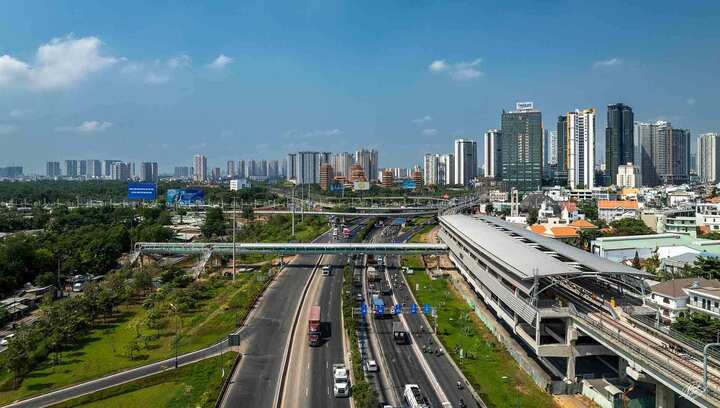
The area around Phuoc Long Station is the first site selected by Ho Chi Minh City for initial TOD investment. (Photo: Le Quan)
Crucially, the city should establish a dedicated agency to manage and coordinate TOD development. Without a central coordinating body, decisions may be delayed, overlap, and incur higher costs.
At the “Enhancing TOD Implementation Capacity and Memorandum of Understanding Signing Ceremony” between the Ho Chi Minh City People’s Committee and the UK’s Foreign, Commonwealth & Development Office on September 23, Mr. Bui Xuan Cuong, Vice Chairman of the Ho Chi Minh City People’s Committee, stated that the city is at a pivotal development stage following its merger with Binh Duong and Ba Ria – Vung Tau. Ho Chi Minh City’s area has expanded to over 6,700 km², with a population of approximately 14 million.
With its new scale, Ho Chi Minh City aims to become a regional super-city, playing a key role in economic and innovation networks.
“Ho Chi Minh City identifies TOD as a key strategy for building a connected, smart, and sustainable super-city. The city is focused on completing its metro system, aiming to operate 355 km of urban rail by 2035. The issuance of Resolution 38 on TOD development is a significant step toward addressing transportation challenges, enhancing connectivity, and improving quality of life,” said Mr. Cuong.
The Ho Chi Minh City leadership emphasized that the city will learn from international experiences, particularly from the UK, in implementing the TOD model, from financial mechanisms and legal frameworks to selecting models suited to Vietnam’s context, contributing to the realization of the city’s “super-connected” vision in the near future.
Unveiling the Mysteries of Ghost Towns
Urban satellite development must prioritize four key criteria: transport connectivity, including urban rail, highways, and inter-regional metro systems; social infrastructure, such as hospitals, schools, shopping centers, and parks; economic and employment opportunities, through the establishment of industrial zones, service hubs, and innovation centers within the satellite cities to ensure long-term residential appeal and affordable housing prices.
Khải Hoàn Prime Unveils Exclusive Pre-Contract Launch Offer
Khải Hoàn Prime continues to captivate the Southern Ho Chi Minh City market with its exclusive release of 100% river-view resort-style apartments. This limited offering underscores its exceptional value as both a premier living space and a high-potential investment opportunity, especially as it approaches the pivotal moment of signing the official sales contract.
Struggling with Land Costs: Lotte Withdraws from Eco Smart City, Empire City’s 88-Story Tower Developer Seeks Help, Novaland Stuck in 13 Projects for Nearly a Decade
Following Lotte’s request to terminate the Eco Smart City project, the developer of Empire City has also submitted a formal objection to the additional land use fee requirement.
The Global City: Premier Living and Investment Hub in the Heart of Ho Chi Minh City’s Metropolis
In the heart of Ho Chi Minh City’s emerging megacity blueprint, The Global City stands as a beacon for visionary investors and discerning residents alike. Each project within this transformative hub is meticulously crafted to embody a unique identity, seamlessly blending international urban living with sustainable values. Here, a privileged community of elites converges, not just to reside, but to thrive in a lifestyle that redefines modern sophistication and enduring legacy.

